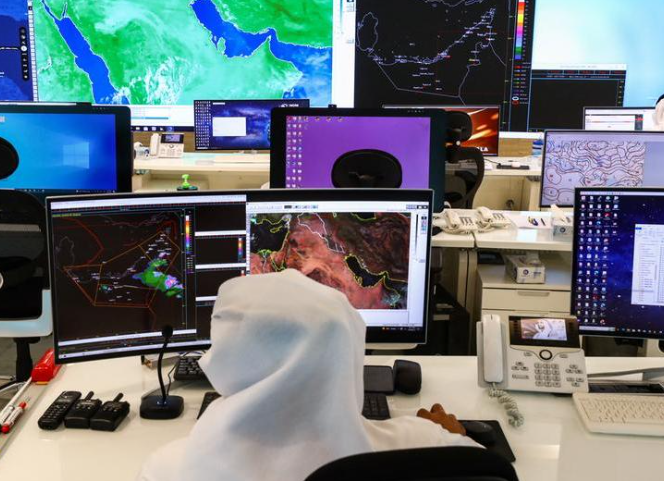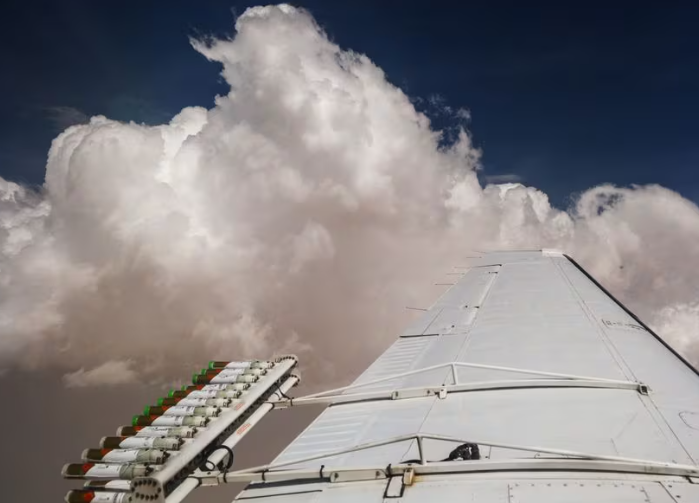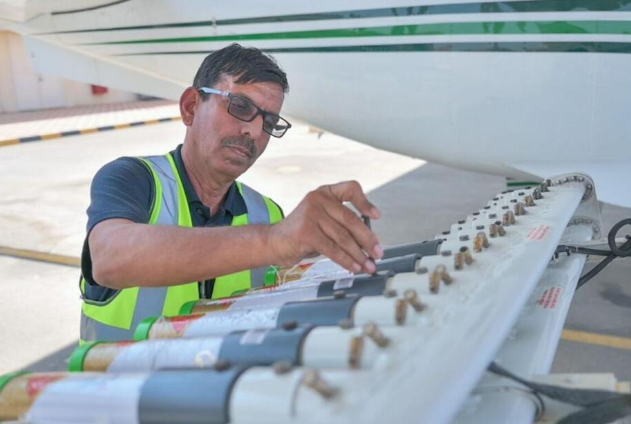UAE 27 cloud-seeding missions, igniting a transformative journey that turned a once arid winter into a season of record-breaking rainfall.
The UAE recently conducted an impressive series of 27 cloud-seeding missions over the course of five days, resulting in a significant increase in rainfall across the country. The meteorological department reported that the amount of rainfall recorded last week was comparable to levels observed three decades ago. The sudden deluge led to flooding in various parts of the country, prompting businesses to implement remote work arrangements and schools to transition to online learning.

The pivotal role of cloud seeding in augmenting rainfall, particularly following a dry spell during the winter months. Dr. Ahmed Habib, a climate expert from the National Centre of Meteorology (NCM), explained that the missions targeted clouds exhibiting favorable conditions such as strong updrafts and high humidity levels. These efforts aimed to enhance precipitation across the nation, with particular emphasis on areas experiencing water scarcity.
Dr. Habib noted that while the eastern region of the country received 317mm of rainfall in 1988, this year’s recorded maximum rainfall at the Umm Al Ghaf station stood at 224.1mm. He emphasized that the UAE’s cloud-seeding initiatives consistently yield a yearly minimum increase of 15 percent in rainfall, contributing to the generation of a substantial water supply ranging from 84 to 419 million cubic meters through these operations.

The dry winter experienced by the UAE in December 2023 was a notable contrast to previous years, with lower levels of precipitation observed throughout the country. Despite encountering some rainfall during this period, it was not as substantial as in previous years, prompting officials from the NCM to attribute the phenomenon to atmospheric pressure systems affecting both surface and upper layers across the region.
In addition to cloud-seeding activities, Dr. Habib elaborated on the natural meteorological factors that contributed to the recent heavy rainfall. He explained that a low-pressure system originating from the Arabian Sea, accompanied by a humid air mass, influenced the surface layer, while an extension of low pressure from the Middle East interacted with a cold air mass in the upper atmosphere. These conditions led to the formation of convective clouds, resulting in prolonged rainfall over a span of two to three days.
Dr. Habib further highlighted the quick variations in weather patterns typical of the UAE during the transition from winter to spring. He noted the influence of a northwesterly wind originating from the north of Saudi Arabia, which brought in a cold air mass, causing temperatures to decrease by seven to ten degrees in some areas. Such fluctuations are characteristic of the region during this period, marked by alternating hot and cold spells.

Overall, the UAE’s proactive approach to weather modification through cloud seeding, coupled with an understanding of natural meteorological phenomena, has proven instrumental in mitigating water scarcity and enhancing rainfall, ensuring a more sustainable water future for the nation.
These advancements in weather manipulation not only address immediate concerns but also serve as a proactive measure against the long-term impacts of climate change. By effectively managing precipitation levels, the UAE is bolstering its resilience to drought and water scarcity, safeguarding essential resources for future generations.
Moreover, the success of the UAE’s cloud-seeding missions underscores the nation’s commitment to innovation and sustainability. Through strategic investments in research and technology, the UAE has positioned itself as a global leader in weather modification, setting a precedent for other nations grappling with similar environmental challenges.
Looking ahead, the UAE remains dedicated to further refining its cloud-seeding techniques and expanding its capacity to influence weather patterns. By continuing to collaborate with experts in meteorology and atmospheric science, the nation aims to optimize its cloud-seeding operations and maximize their impact on rainfall augmentation.
Stay up to date with every latest news-click here



